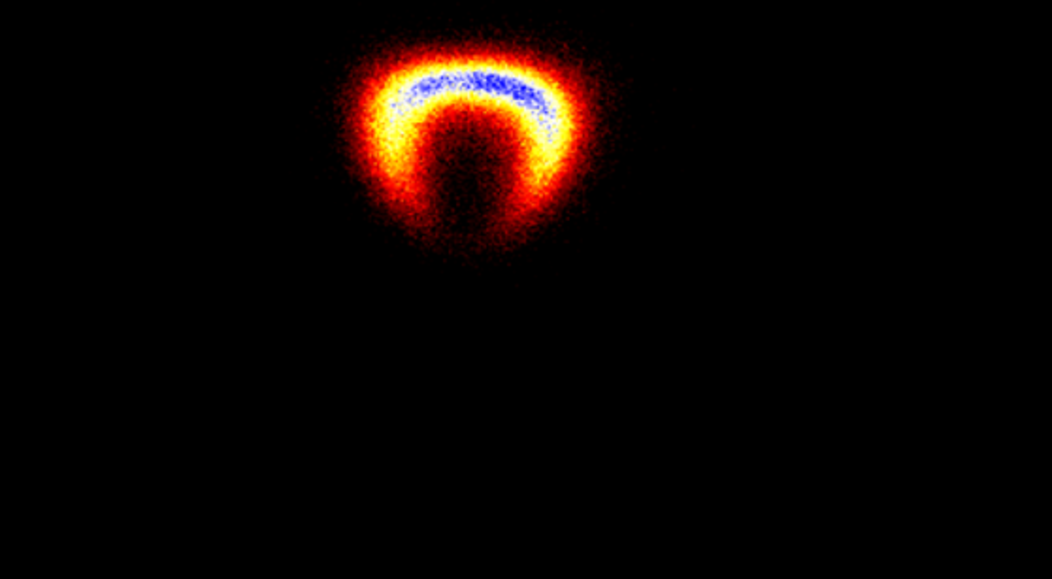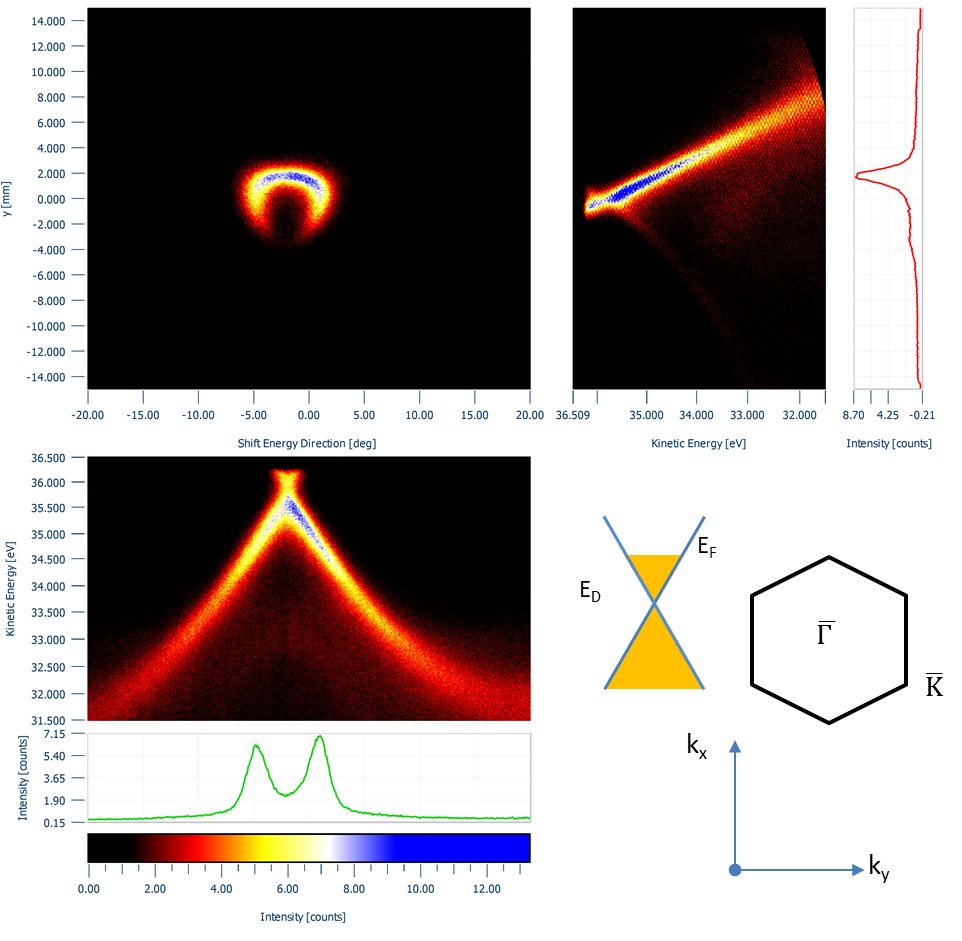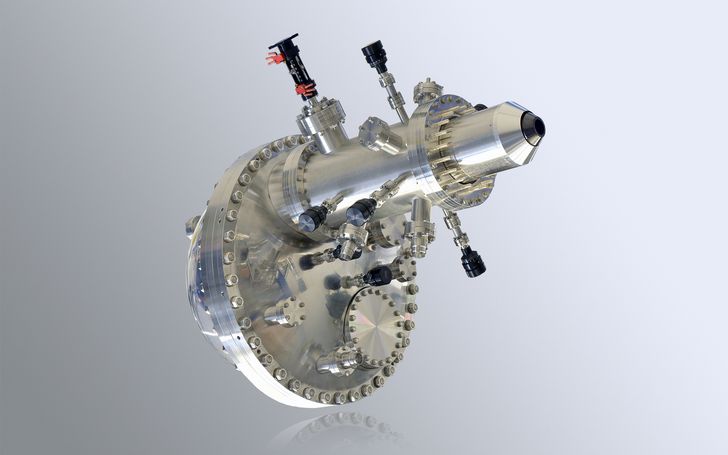This week we are happy to share new results from our ASTRAIOS 190 2D-CMOS analyzer that demonstrates its superior performance for angle-resolved photoelectron spectroscopy (ARPES). The newly developed single spot shifting lens grants access to two perpendicular momentum directions. While one direction is directly resolved on the detector, as the axis which is perpendicular to the energy axis, the other direction is accessible by the use of the single spot shifting lens, which is shifting the selected momentum distribution through the virtual slit and into the hemisphere. This way no rotation of the sample is required in order to measure the band structure in two momentum directions. The ASTRAIOS offers angular resolved modes with acceptance angles of up to ± 30°, enabling measurements of electronic structures within a large section in the momentum space.
The presented measurements are made in 4 dimensions, representing the electronic structure of graphene on SiC that was prepared by heating of a SiC sample under UHV conditions. In the vicinity of the K-point of the Brillouin zone, the sample shows the well-known Dirac cone that is formed by the π-bands. The Dirac energy is shifted below the Fermi level due to p-type dopants. The sample is irradiated by a SPECS UVS source with a µFOCAL capillary optimized for He II excitation, i.e. 40.8 eV and the spectra are recorded using the wide angle mode with ± 20° acceptance angle. The upper left figure shows energy distribution curves (EDC) at approximately 1.5 eV below the Fermi energy, where the vertical axis corresponds to the kx momentum direction and the horizontal axis to the kx direction,.. Furthermore, cuts along the energy axis are presented that show the momentum distribution curves as a function of both momentum directions. The clearly visible asymmetry is an intrinsic feature of graphene’s band structure and reflects the so-called trigonal warping.
The ASTRAIOS even offers the possibility to go further into reciprocal space. The figures below are from the same sample under identical experimental conditions, but using the super-wide-angle mode with an acceptance angle of ± 30°. In this way, even the Dirac cone from neighbouring Κ-points can be detected. The EDCs are taken at different binding energies below the Fermi level. All data shown here is uncorrected raw data and is taken at room temperature. The acquisition time of one 4D data set is 15 minutes.
We hope that you are as excited as we are about SPECS newest ARPES analyzer, the ASTRAIOS, and keep looking for upcoming news.
ASTRAIOS 190 2D-CMOS
The ASTRAIOS 190 is a revolutionary ARPES analyzer for 2D momentum mapping. It is based on a direct k-mapping single spot shifting lens with a virtual entrance slit for ultimate k- and energy resolved measurements.
Key Features
- Single spot parallel shifting lens (patent pending)
- ± 30° acceptance angle
- ± 1 Å-1 k-range for He I, ± 2.5 Å-1 k-range for (S)XPS
- and more



